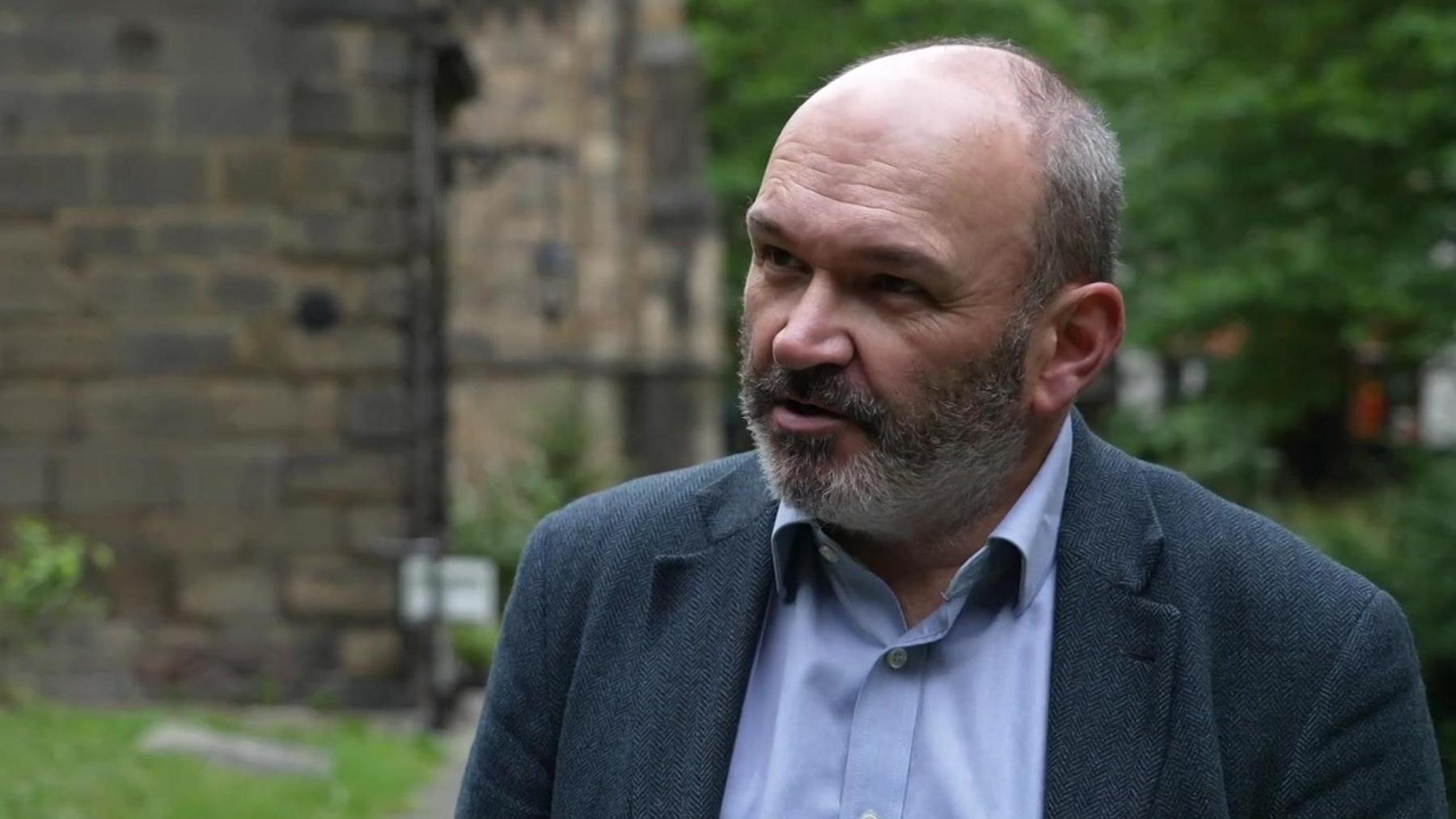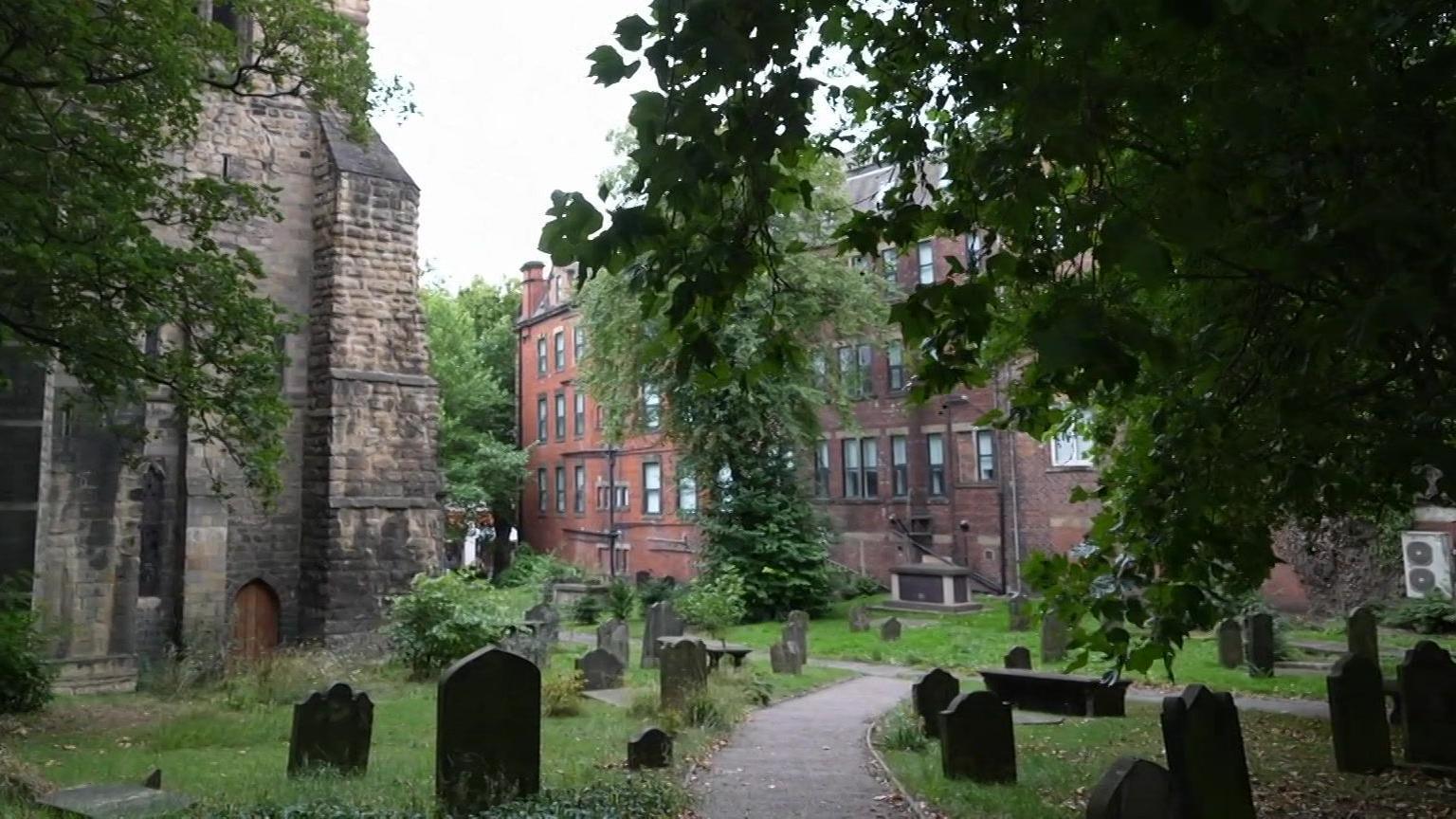Memorial plan for 16 executed after witch trials

Andrew Bergin said the Newcastle was an extraordinary case and deserved to be more widely known
- Published
An event has taken place to mark what is thought to be one of the largest witch trials in British history.
In August 1650, 15 women and one man were publicly executed on Newcastle's Town Moor, with their bodies then buried in unmarked graves.
Historians, campaigners and authors attended a discussion at Newcastle's Lit and Phil on how best to remember the 16, who came from across Tyneside, Northumberland and Durham.
Campaigners are now hoping to raise funds for a permanent memorial, similar to a number across Scotland.
Andrew Bergin, author of a work of fiction which draws on the trial and its aftermath, described it as a mostly untold story.
He said: "Its an extraordinary one, in terms of the scale, complexity and corruption of the trial.
"But it's also one of strong women - I keep thinking about my gran, how she could have been in her time like one of these."

The bodies were buried in unmarked graves in a churchyard in Newcastle
Historian Judith Langlands-Scott added: "They weren't witches, they wouldn't like that title, that was the title that led to them being killed.
"These women were not what happened to them, they had lives before that, they were mothers, sisters, daughters."
To honour their memory, campaigners are aiming to raise £40,000 for a plaque at the Guildhall on Newcastle's quayside.
Follow BBC North East on X, external, Facebook, external, Nextdoor and Instagram, external.
Get in touch
Do you have a story suggestion for BBC Tyne?
Related topics
- Attribution